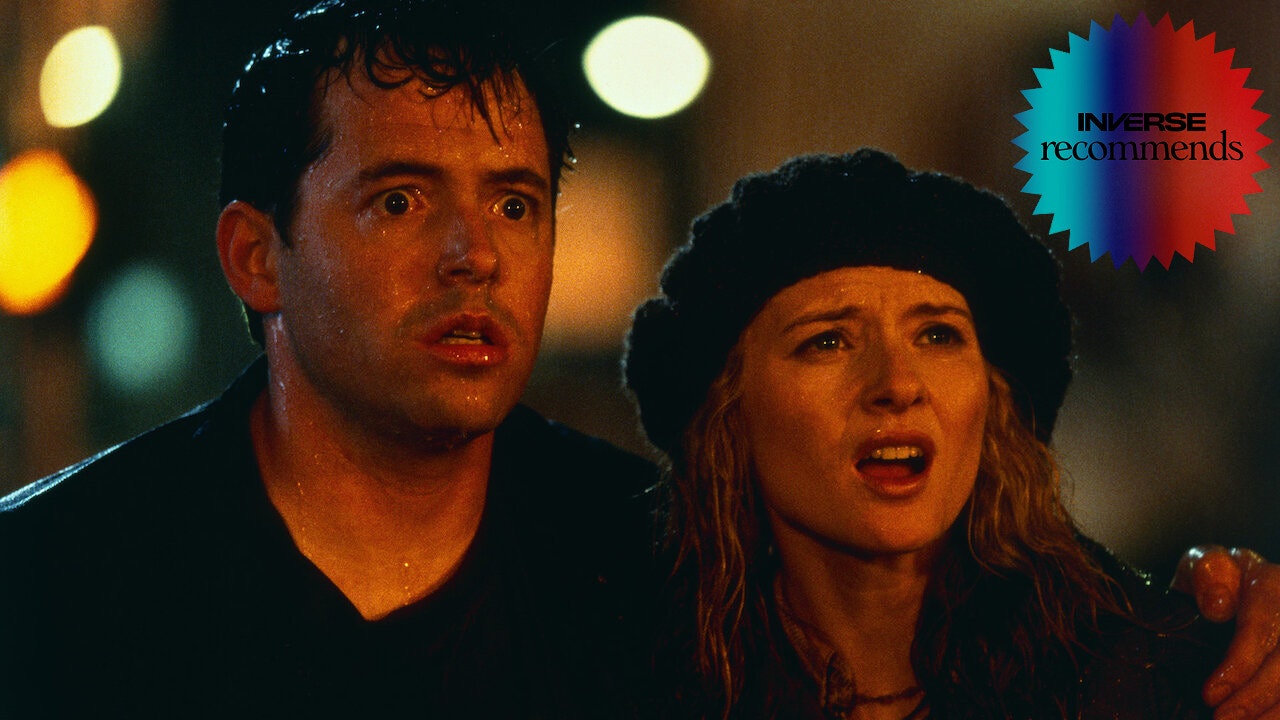
Fair or not, advertising sets expectations for movies. Critics can help spread the word about a movie, as can word of mouth, but nothing can replace a summer blockbuster’s multi-million dollar ad campaign.
It can be fun getting swept up in the hype, letting yourself obsess over every breadcrumb. But in some cases, a movie can fall victim to the success of its own marketing campaign. That’s what happened to Roland Emmerich’s 1998 Godzilla, an odd movie that fundamentally misunderstands both its actors and main attraction. It’s so bad that it’s mesmerizing.
Godzilla, of course, originates with Ishirō Honda’s legendary 1954 kaiju movie, but Americans first saw the story of the radioactive lizard in 1956 as Godzilla, King of the Monsters! Re-edited for American audiences, the new story featured an American lead and removed references to American forces dropping a nuclear bomb on Nagasaki. Audiences loved it, perhaps even more than King Kong, and Godzilla became the first Japanese franchise to succeed in America.
Godzilla’s popularity rose and fell through the decades, and Honda’s eighth directorial turn with the creature, Terror of Mechagodzilla in 1975, was such a flop that the creature stayed off screen for almost a decade, until The Return of Godzilla in 1984. Around this time Henry Saperstein, an American producer who had invested in the franchise for decades, had begun petitioning Godzilla’s studio, Toho, to give Americans a chance with the giant lizard.
In 1994, Saperstein told Filmfax that for “ten years I pressured Toho to make one in America. Finally they agreed… I guess my crowning glory will be when TriStar’s movie is released sometime in mid-summer 1995.”
He guessed wrong. The initial idea for America’s Godzilla, crafted by Speed-director Jan de Bont and special effects legend Stan Winston, was eventually discarded in favor of the team behind Independence Day, Emmerich and Dean Devlin.

The two were not initially interested. Devlin, quoted in Peter Bart’s 1999 book about blockbusters, The Gross, said that “both of us thought it was a dopey idea.” But eventually the nostalgia of Godzilla got under Emmerich’s skin, telling the New York Daily News that “Godzilla was one of the last concepts of the ‘50s that had never been done in modern form -- that idea of the giant monster as in Tarantula or The Beast From 20,000 Fathoms. Why not do them again?”
In Independence Day, alien invasions were reintroduced with the paragon of cool, Will Smith. With Godzilla, the problems start with the casting of Dr. Niko "Nick" Tatopoulos (Matthew Broderick). Broderick is many things, but action lead is not one of them. Tatopoulos is nice enough, happy collecting data on large, radioactive worms in Chernobyl, but the military whisks him away to study a new giant animal.
The giant animal is Godzilla, a fact confirmed when a mysterious Frenchman who claims to work for an insurance company (Jean Reno) questions a fisherman who was a victim of the beast’s attacks. The big lizard stomps towards New York, which causes Mayor Ebert (Michael Lerner) and his assistant Gene (Lorry Goldman) to evacuate the city.
The mayor and his assistant are the oddest part of Godzilla. The advertising for this movie was intense, with buses plastered with proclamations like “His foot is as long as this bus” and billboards bearing the unforgettably immature slogan “SIZE DOES MATTER.” Imagine it’s 1998 and you’re intrigued enough by the promise of this monster that you get a ticket. And then you sit down and it’s the director making fun of Roger Ebert and Gene Siskel, with a mayoral campaign based around a “Thumbs Up” slogan and the two always making the wrong choices.

In his review, Ebert said “they let us off lightly; I fully expected to be squished like a bug by Godzilla.” That would have been more fun.
There are hints of what a better Godzilla would have looked like, one focused on the ragtag TV journalists Audrey (Maria Pitillo) and Lucy (Arabella Field) and the latter’s husband, cameraman Victor "Animal" Palotti (Hank Azaria). Azaria seems to be the only person in the cast who understands how a summer movie works, and a scene where he races through the street trying to capture the creature on film is genuinely fun.
But there’s only one good Godzilla movie that came out in 1998: Sean “Puff Daddy” Combs’ nearly eight minute music video for his single associated with the movie, “Come With Me,” which features Led Zeppelin legend Jimmy Page recreating his “Kashmir” riff with Rage Against the Machine’s Tom Morello on bass.
As Combs is blasted around his apartment in a blaze of fire, flies into the sky, transforms into a flock of doves, and is reborn to perform with a live symphony orchestra in Times Square, it’s clear that at least someone understood that Godzilla was a chance to be larger than life.
Godzilla: The Album became a massive hit, selling over 2.5 million copies worldwide. Godzilla the movie, on the other hand, was quickly abandoned by TriStar. Godzilla had one of the more remarkable promotional campaigns of all-time, one that would eventually overtake the awful product it was promoting. In the end, the monster movie became a story of man’s hubris.
Godzilla is streaming on Netflix until June 30.







